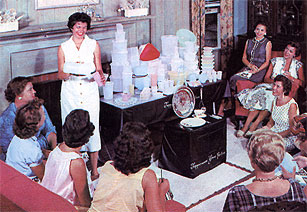
In my opinion, the most interesting work done by historians in the last fifty years has been the ambitious detective work required to tell history “from the bottom up” as well as “from the top down.” Social historians believe (and I enthusiastically agree) that ordinary lives are worth examination, and that history is incomplete if one focuses only on the lives of the rich and the powerful. Working on Eyes on the Prize back in the 1980s changed my life—and the lives of most of the series staff. We all felt responsible for “getting the story right” –in all its complexity — and we tried to show how the civil rights movement unfolded from the point of view of both its footsoldiers and its leaders. My approach to history, to storytelling, and to managing a film staff were all profoundly shaped by the experience.
In my work as an independent filmmaker, I have burrowed deeply, telling the stories of little-known women in the American past. I have made a successful career telling small, character-driven stories that provide my audience with unusual windows onto big issues in American history. (I’ve made the films A Midwife’s Tale, based on the pathbreaking book by Laurel Thatcher Ulrich and Tupperware! based largely on my own research, and I also created the website DoHistory.org.) The stories that excite me most are the stories of unsung ordinary women living extraordinary lives in times of enormous social change.
For me, the recent historical literature is a gold mine — a trove of compelling, provocative stories that have not yet made it to the screen. But the broadcasters of historical documentaries are wary of stories like these. They are under pressure to get ratings, and they believe that channel flippers probably won’t tune in and watch films about topics they don’t already recognize to be significant. The two primary broadcasters of American history, the History Channel and PBS’s American Experience, devote only a small percentage of their time slots to women’s stories and when they do, they gravitate to the historical women with well known names. That list, unfortunately, is extremely short; it includes people like Eleanor Roosevelt, Annie Oakley, and Amelia Earhart.
Fortunately for filmmakers like me, funding from state humanities councils can provide a toehold in our efforts to tell the stories of lesser known people. If broadcasters see that substantial resources are already in place, they will seriously consider broadcasting a film they’d otherwise ignore. In my case, I would never have been able to make either A Midwife’s Tale or Tupperware! without the help of state humanities councils and the National Endowment for the Humanities.
Unfortunately, however, NEH funding is getting tighter and tighter, the national endowment is shifting funds out of its public media program into museum programs and fellowships, and as a result, a filmmaker’s odds of getting funding for an NEH media project are becoming slimmer, making it increasingly hard to make films about non-famous women in the past.
Is it easier to make public affairs documentaries that deal with women’s stories? Take a look and you’ll find that women are more often the subject of films in the public affairs realm. Series like POV, Wide Angle, and Independent Lens on PBS, HBO’s documentary division, A&E, Showtime, and even movie theaters show documentary films dealing with gender issues and the lives of women. Examples from the past ten years include: Born into Brothels (about children born in brothels in India), Thin (about young women in a clinic for eating disorders), A Woman Among Warlords (about an Afghan woman running for political office after the Taliban were ousted), and The Greatest Silence: Rape in the Congo (about rape on an unimaginable scale, used as a weapon of war).
Are the broadcasters and distributors of public affairs documentaries more daring, more progressive, or more interested in women’s issues as a group than the broadcasters of history films? Maybe. But there are other factors involved. In a competitive multichannel marketplace where ratings really matter, many of the most successful public affairs documentaries about women deal with subjects like rape, sexual slavery, eating disorders, and mail order brides. Sex and voyeurism both sell.
But there’s another factor intrinsic to the difference between telling stories about the past and telling stories about the present-day. Filmmakers need images, and it’s easier to go out and shoot footage of little-known women living their lives today than it is to find footage of little-known women in the past. I am ecstatic when I stumble on a trove of images of ordinary people at work (needles in proverbial haystacks for the most part). And finding home movies of working class women is even harder, since most lower and middle income families in the past were not wealthy enough to own movie cameras, and didn’t have the leisure time to document their own lives.
Personally I think it’s worth making the effort to create films about “history from the bottom up.” The funding prospects may be bleak but it’s important to tell stories that fill the gaping holes in the public’s understanding of the past. I love the detective work involved. And I believe it matters, since the stories we tell about ourselves shape our perceptions of who we are — both as a society and as individuals.
–Laurie Kahn-Leavitt, Filmmaker


